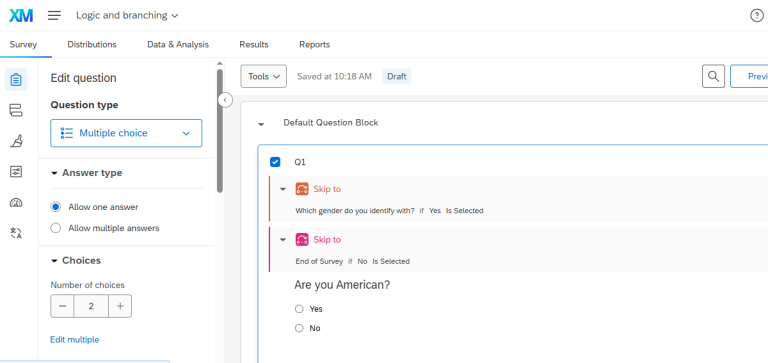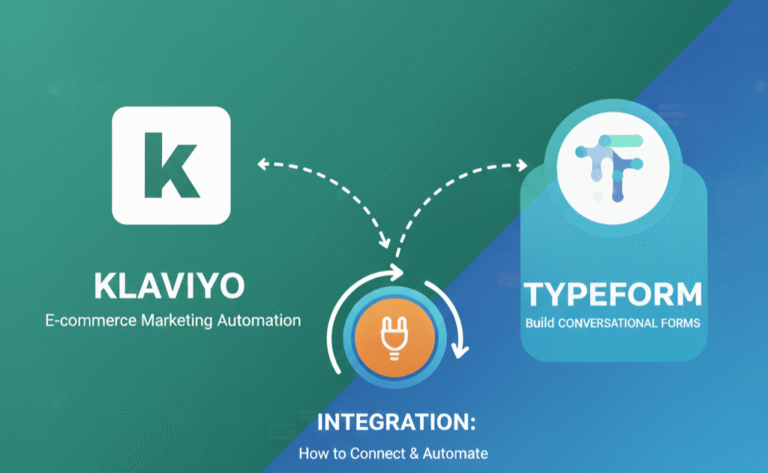What Is an Online Survey? Guide for Beginners
Online surveys have become a cornerstone of modern research, helping organizations and individuals gather valuable insights with speed, scale, and precision. Whether you’re a business owner looking to measure customer satisfaction or a PhD student collecting dissertation data, understanding how online surveys work is essential.
This blog offers a comprehensive breakdown of what online surveys are, how to create them effectively, and why they’re one of the most powerful tools in data collection today. If you’re just getting started or want to refine your approach, this guide will equip you with everything you need to succeed.
Looking for survey design support? Our team at My Survey Help offers done-for-you survey creation on platforms like Qualtrics, Typeform, and SurveyMonkey.
What Is an Online Survey?
An online survey is a digital method of collecting information from a target audience using internet-based platforms. It consists of a series of questions—either open-ended or multiple choice—designed to gather opinions, feedback, behaviors, or demographic information.
Unlike traditional paper surveys, online surveys offer automated data collection, real-time analytics, and broad distribution via email, social media, or embedded web forms. They’re used across industries, including academia, marketing, product development, public health, and HR.
Key Components of an Online Survey
1. Survey Platform
Your survey must live on a digital platform like Google Forms, Typeform, SurveyMonkey, or Qualtrics. Each tool offers different features, pricing, and customization levels.
2. Survey Questions
Questions can range from Likert scales and multiple choice to matrix tables and free-text responses. The design of your questions greatly influences the quality of your data.
3. Target Audience
Who you survey is just as important as what you ask. Clearly define your audience based on demographics, location, profession, or behavior.
4. Distribution Method
Surveys can be shared via links, QR codes, social media, or email campaigns. Some platforms allow embedding directly into a website or app.
5. Data Collection & Reporting
Online survey platforms offer dashboards to monitor real-time responses, completion rates, and drop-off points, enabling you to optimize as needed.
Benefits of Online Surveys
-
Speed & Efficiency: Launch surveys quickly and collect data in hours instead of days or weeks.
-
Cost-Effective: No printing, postage, or manual data entry needed.
-
Scalable: Reach hundreds or even thousands of respondents across geographies.
-
Automated Data Analysis: Built-in analytics tools simplify interpretation.
-
Flexible Design: Custom branding, skip logic, and dynamic paths enhance user experience.
For a deeper dive into the benefits of survey platforms, check out our SurveyMonkey Guide or explore the Qualtrics overview.
Common Use Cases for Online Surveys
-
Academic Research: Undergraduate and PhD students use online surveys to collect thesis or dissertation data.
-
Customer Feedback: Businesses use post-purchase surveys to improve products or services.
-
Market Research: Companies assess brand awareness, product-market fit, or competitive positioning.
-
Employee Engagement: HR teams collect feedback to improve workplace culture and retention.
-
Event Planning: Organizers use surveys before and after events to gather preferences and feedback.
Online Survey Tools You Can Use
Each tool has its strengths depending on your goals, budget, and technical needs. Here’s a quick overview:
| Tool | Best For | Unique Feature |
|---|---|---|
| SurveyMonkey | Business & education surveys | Robust templates & analytics |
| Qualtrics | Academic & enterprise research | Advanced logic & segmentation |
| Typeform | UX-focused surveys | Conversational interface |
| Google Forms | Free and simple surveys | Seamless Google integration |
| QuestionPro | Market research | Panel management & reporting |
| Jotform | Lead collection, healthcare | HIPAA compliance available |
Explore our full guide on Typeform for UX-driven surveys or learn about SurveyMonkey for general-purpose data collection.
How to Create an Effective Online Survey
Define Your Objective
Before you write a single question, clearly define what you want to learn from your survey. Are you collecting customer feedback, measuring employee satisfaction, or conducting academic research? A well-defined objective ensures that your survey remains focused and relevant. Objectives help guide your question structure, determine the type of data you’ll need, and influence which audience you should target. For example, a market research survey may require a larger, demographically diverse sample, whereas an internal HR survey may only target employees in a specific department.
Pro tip: Write down your survey goal in one sentence, such as “Understand what features our beta users value most.” This will help keep your content aligned and purposeful.
Choose the Right Tool
Your platform should support your technical, aesthetic, and analytical needs. If you’re a student or researcher collecting academic data, a robust tool like Qualtrics offers complex branching logic and advanced analytics. For brands prioritizing engagement and design, Typeform is excellent for creating interactive, on-brand surveys. On a budget or need something quick? Google Forms is free and effective for simpler projects.
Take into account:
-
The types of questions you need (e.g., scales, file uploads, ranking)
-
Logic flow and conditional branching
-
Integration needs (e.g., Google Sheets, Mailchimp, CRMs)
-
Branding and customization options
-
Data security and compliance (especially for academic or medical research)
Write Clear, Purposeful Questions
Survey success hinges on the quality of your questions. Avoid jargon, double-barreled questions (e.g., “How satisfied are you with the speed and accuracy of service?”), and leading language that biases responses. Keep each question focused on one idea and use neutral wording. For rating scales, be consistent — use the same number of scale points and order throughout.
Where necessary, offer an “Other” or “Prefer not to answer” option to ensure inclusivity and respect privacy.
Use Logic Smartly
Skip logic, branching, and piping can dramatically improve the respondent experience. By dynamically tailoring the survey flow based on previous answers, logic helps keep questions relevant and reduces unnecessary clicks. For example, if a respondent says they have never used your product, logic can skip product satisfaction questions and move directly to awareness or perception ones.
Well-implemented logic:
-
Increases completion rates
-
Shortens the overall survey
-
Boosts the relevance and quality of responses
However, overusing logic can lead to complexity and potential bugs—test it thoroughly before launch.
Test Before You Launch
Piloting your survey is a non-negotiable step. Send it to a small, representative sample or a colleague for a dry run. Review how long it takes to complete, whether the logic works as intended, and whether the questions make sense. Check for typos, layout glitches on mobile devices, and question fatigue. Testing also gives you a sense of how respondents interpret your questions, which helps in refining ambiguous or confusing items.
Also, test across different devices (phones, tablets, desktops) to ensure a consistent experience.
Challenges of Online Surveys
Despite their many advantages, online surveys come with a few challenges that must be addressed to ensure data accuracy and high response rates.
Survey Fatigue
When surveys are too long or poorly structured, respondents are more likely to abandon them halfway. This leads to incomplete data and potentially biased results, as only the most engaged respondents finish. To avoid fatigue:
-
Keep surveys under 10 minutes where possible.
-
Use progress indicators.
-
Avoid unnecessary or repetitive questions.
-
Prioritize the most important questions at the beginning.
Low Response Rates
It’s not enough to create a great survey—you also need people to take it. Without incentives or strategic distribution, you may see disappointing participation. Improve your response rate by:
-
Clearly communicating the purpose of the survey.
-
Offering small incentives (discounts, gift cards, or entries into a prize draw).
-
Timing your outreach for when your audience is most likely to respond (e.g., mid-week, mid-day).
-
Personalizing your invitations whenever possible.
Bias & Inaccuracy
Poor survey design can unintentionally influence answers or fail to capture nuanced opinions. Common sources of bias include:
-
Leading or loaded questions
-
Non-neutral response scales
-
Survey wording that implies a “correct” answer
-
Limited or exclusionary answer choices
To reduce bias, conduct a pretest and revise any ambiguous, emotionally charged, or culturally sensitive wording.
Tech Limitations
Not all survey platforms are created equal. Free or entry-level plans often restrict access to essential features like:
-
Logic branching
-
Multiple user collaboration
-
Custom branding
-
Advanced analytics
-
Data exports in various formats (CSV, Excel, SPSS)
Before committing to a tool, evaluate your technical needs and budget. If you’re running a long-term or high-stakes study, it’s worth investing in a platform that offers the depth and flexibility your project requires.
External Resources Worth Exploring
Final thoughts
Online surveys are one of the most accessible and powerful tools for collecting actionable data. From gathering academic insights to making customer-driven decisions, a well-crafted online survey opens the door to informed choices and better outcomes.
Need help creating or managing your next survey?
Let the experts at My Survey Help take the lead. Whether you’re working with Qualtrics, Google Forms, Typeform, or something else entirely, we help you craft effective surveys from start to finish.
Contact us now for done-for-you survey design tailored to your goals.








2 Comments
Comments are closed.